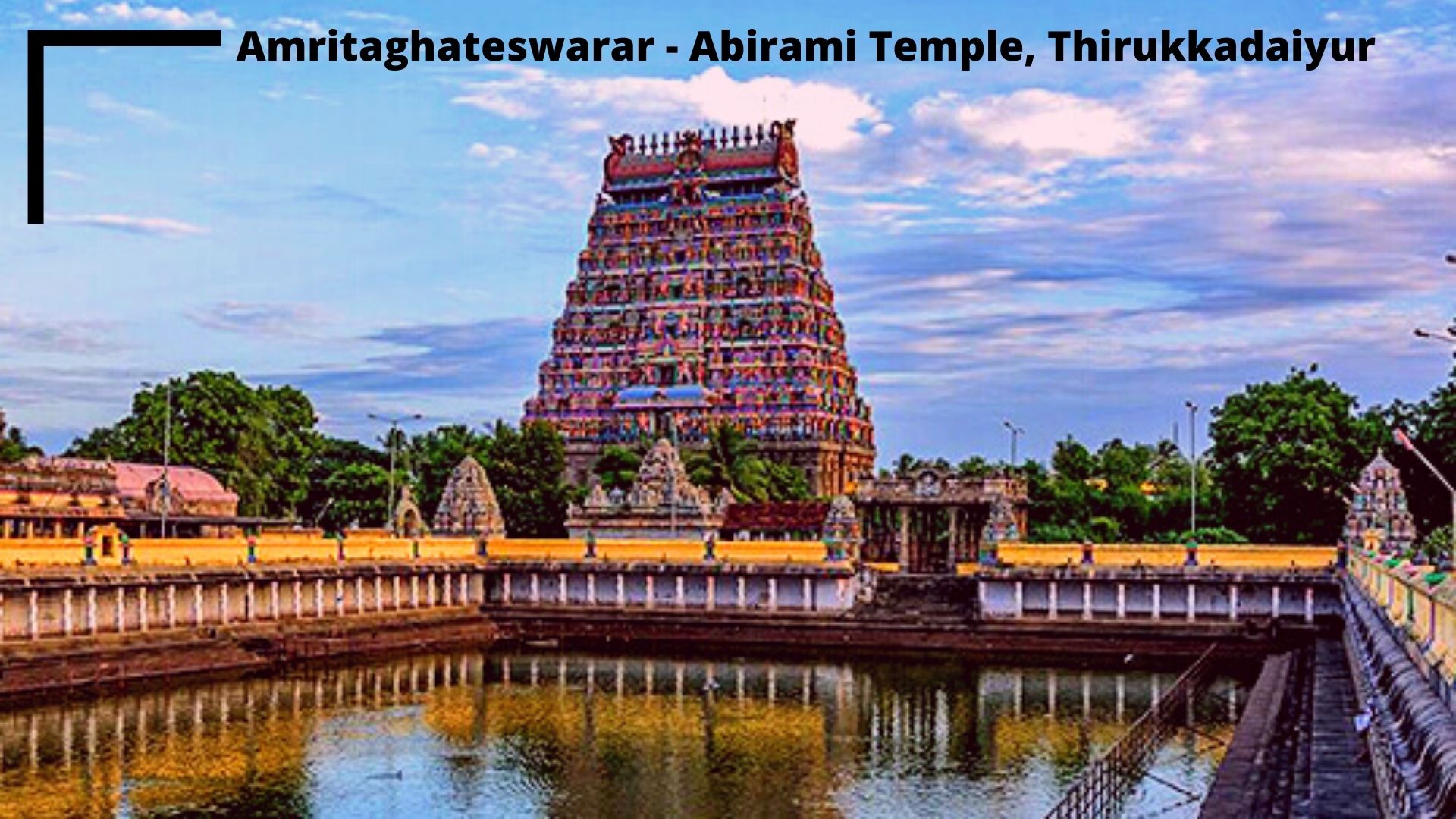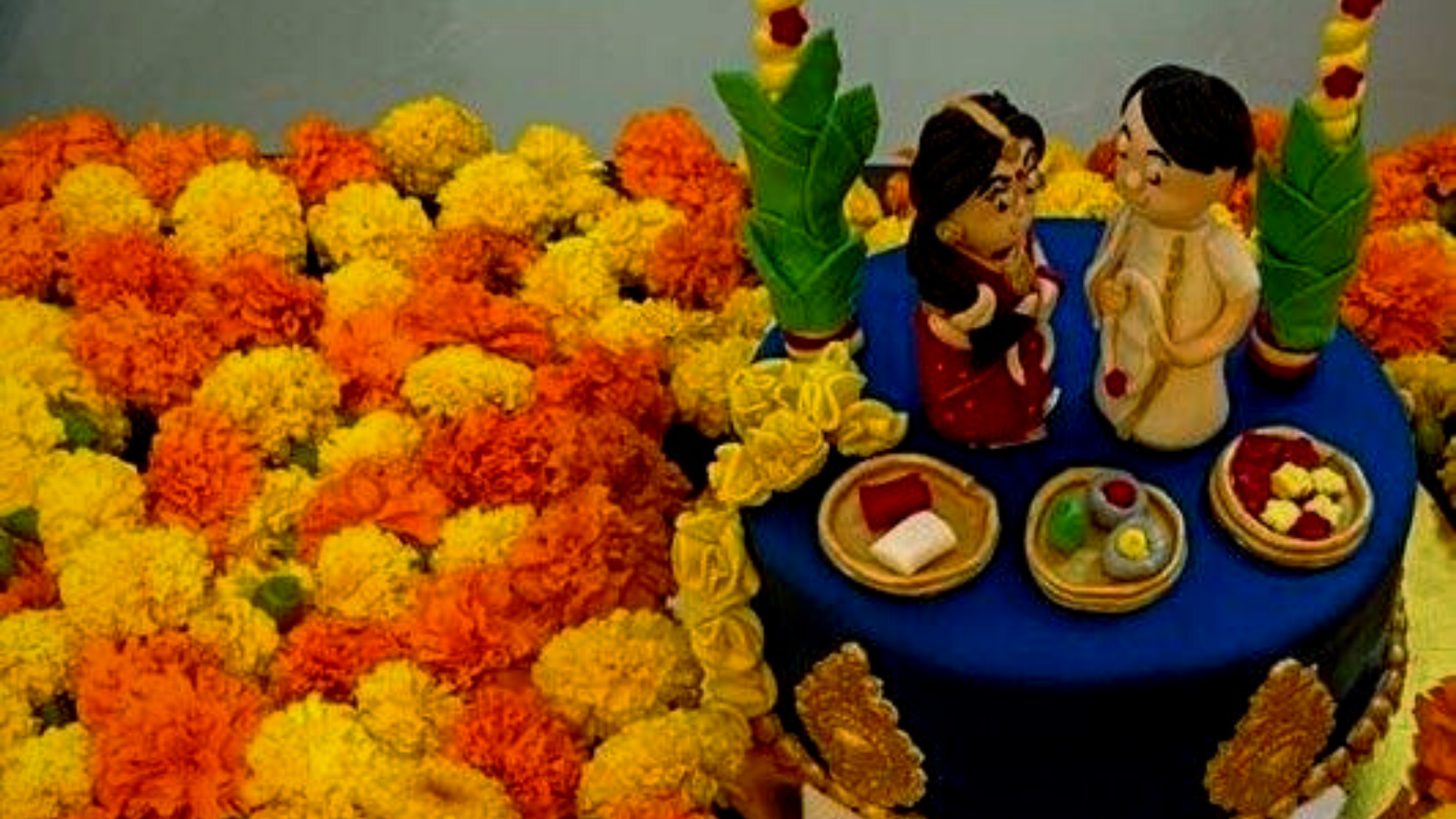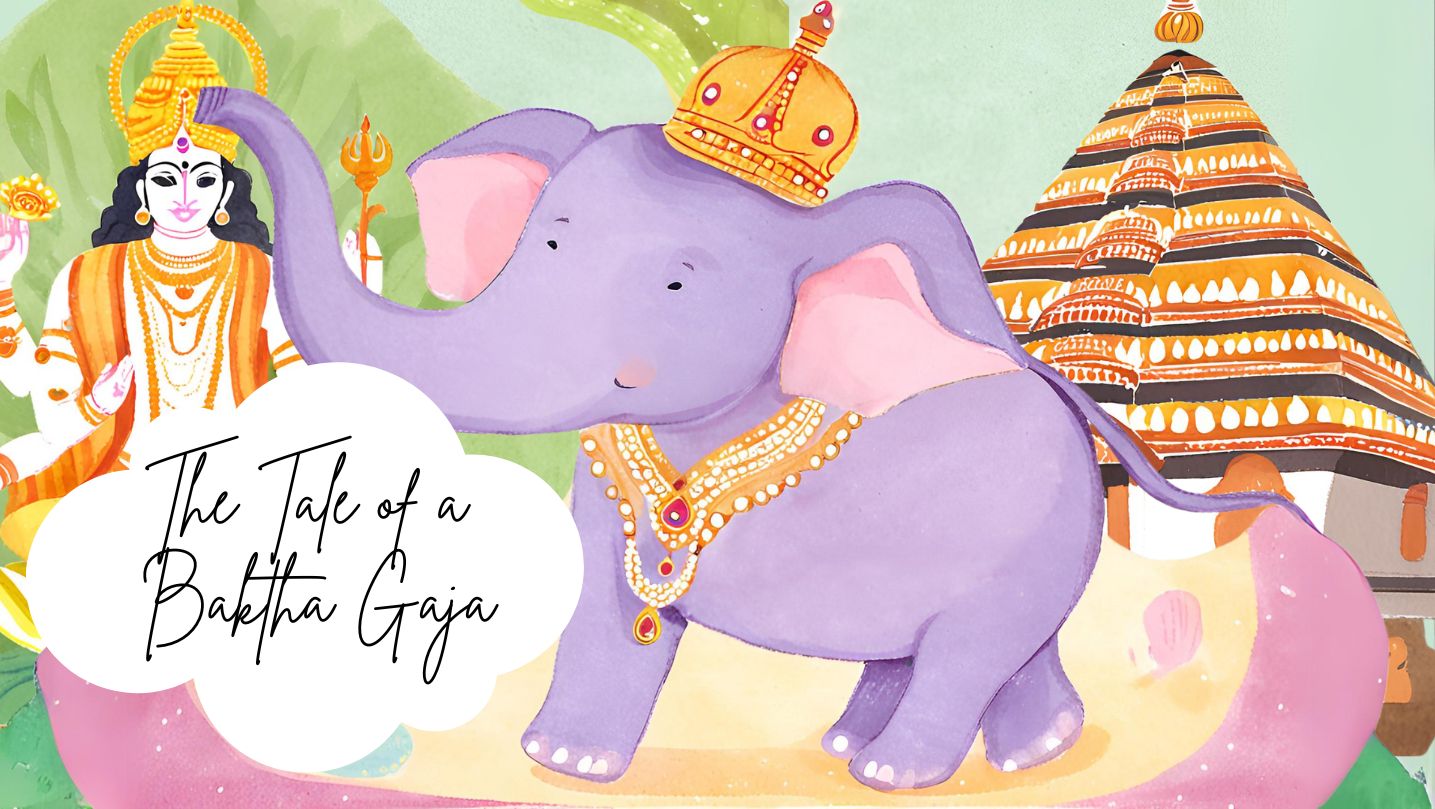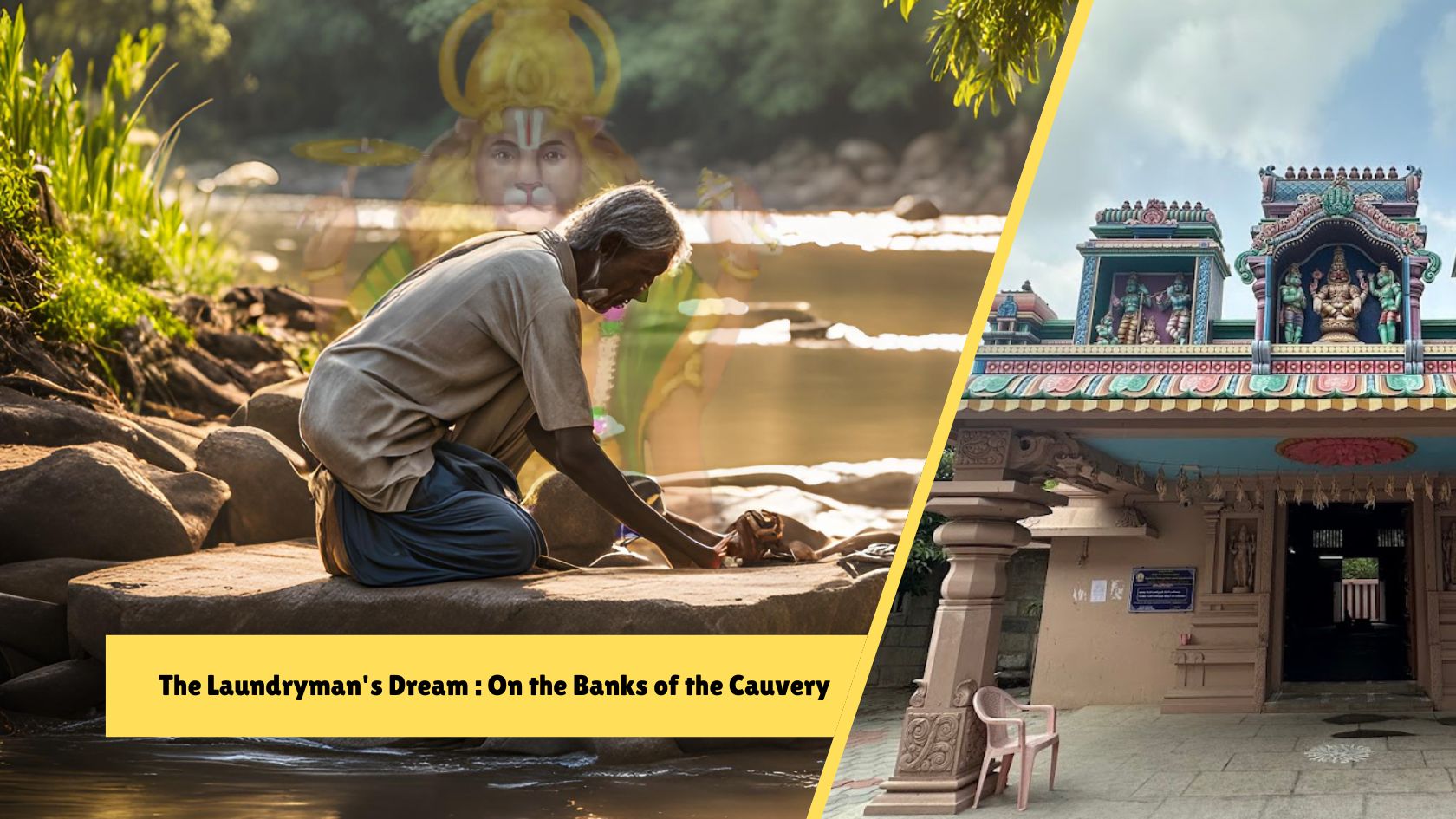The Samudra manthan and the divine ambrosia had made the Devas blind once again. Lord Indra with his clan were celebrating the victory of the grand churning. It was unfortunate, they could not find a right place to enjoy the Amrit. After a long search they found a place of sublime in southern India, and they cheerfully started to share the Amrit. Oops! Was it appropriate for them to begin this great undertaking without worshiping lord Ganesha? Lord Ganesha was infuriated by Indra's action and he hid the pot(Gatam) that had the Armit in Thirukkadaiyur. He also raised a Shiva lingam and dedicated it to his father and poured some Amrit over it. That is how the village of Thirukadaiyur was born. The Lord Shiva of this temple is called Amrita Ghat Eshwarar, translated from Sanskrit literally means "Lord that leads to immortality"
The Tevaram, a 7th century Tamil Saiva canonical poem penned by Tamil saint poets known as nayanars, venerates the presiding deity. The temple complex is ten acres in size and features two gopurams, or gateway towers. The eastern tower, with 11 floors and a height of 46 meters, is the tallest (151 ft). There are various shrines in the temple, the most renowned of which are those of Amritaghateswarar and Abhirami. The temple holds six daily rituals ranging from 5:30 a.m. to 10 p.m., as well as twelve annual festivals. The current masonry edifice was constructed in the 9th century by the Chola dynasty, with later expansions attributed to Thanjavur Nayaks.
Eight Ashta Veerattanam temples are built signifying the victory of Lord Shiva over eight de mons. Thirukadaiyur Amrita Ghat Eshwarar Temple is one among them. The legend of Markandeya is associated with the same temple. Once lived a couple Saint Mrikandu and Marudmati near the temple of Thirukkadayur. They were both devotees of Shiva and worshiped him day and night for many years, asking to be graced with a child. Lord Shiva appeared before them and gave them a choice. They can either have a gifted son who would live to be only sixteen, or a son of low intelligence who would live a long life. Graced by the lord, they got an intelligent son. They named him Markandeya.
mons. Thirukadaiyur Amrita Ghat Eshwarar Temple is one among them. The legend of Markandeya is associated with the same temple. Once lived a couple Saint Mrikandu and Marudmati near the temple of Thirukkadayur. They were both devotees of Shiva and worshiped him day and night for many years, asking to be graced with a child. Lord Shiva appeared before them and gave them a choice. They can either have a gifted son who would live to be only sixteen, or a son of low intelligence who would live a long life. Graced by the lord, they got an intelligent son. They named him Markandeya.
Markandeya grew up to be a sincere devotee of Lord Shiva. He would bring water to the temple everyday for worship. On the day he was destined to die, Lord Yama sought to tie his soul with his noose. Markandeya ran to the shrine of the temple and embraced the Shiva Lingam. Ignorant Yama threw the noose anyway, binding Markandeya and the Shiva Lingam together. Angered by Yama’s arrogance, Shiva appeared before him and held Yama under his foot. Markandeya was then blessed by Lord Shiva to remain sixteen years old eternally. For this reason, the Shiva in this temple is called Kalasamhara (Destroyer of Time).
Yama was however released to maintain the cycle of Samsara. The Shiva in this temple is depicted with his forefinger raised in warning to not kill anyone while they are on worship.

The Goddess Abirami looks graceful in this temple. It is believed that Abhirami was incarnated here by the power of Vishnu. The Goddess would bear a conch and a chakra in two hands, while blessing the devotees with the other two hands on abhaya mudra. The beautiful kireedam with a tilted bun structure on the side is exquisite.
The temple, built in the Chola dynasty's temple design, spans 11 acres (45,000 m2) and features five courtyards, several majestic temple towers, and enormous and expansive mandapas. Though the identity of the king who consecrated the temple is unknown, inscriptions in the temple indicate that it has been in use from at least the tenth or eleventh century, during Raja Raja Chola I's reign.
The temple's brick walls were replaced with stone walls during the reign of Kulothunga Chola I (1075–1120), and the mandapam at the front was built. The front gateway of the temple, known as the rajagopuram, is adorned with figures made of mortar reflecting numerous legends linked with the temple.The temple, built in the Chola dynasty's temple design, spans 11 acres (45,000 m2) and features five courtyards, several majestic temple towers, and enormous and expansive mandapas. Though the identity of the king who consecrated the temple is unknown, inscriptions in the temple indicate that it has been in use from at least the tenth or eleventh century, during Raja Raja Chola I's reign.
The temple's brick walls were replaced with stone walls during the reign of Kulothunga Chola I (1075–1120), and the mandapam at the front was built. The front gateway of the temple, known as the rajagopuram, is adorned with figures made of mortar reflecting numerous legends linked with the temple.

The 'Amrita Pushkarini', 'Kaala Theertham', and 'Maarkandeya Theertham' are three temple tanks, or teerthams.' Abhirami is honored with a distinct temple. The Abhirami Anthathi is said to have been performed in the shrine's front hall by the Shakta saint Abhirami Pattar. Markandeyas who worship Kalasamhara Murti have their own shrine at the temple. Thirukadaiyur contains a historic Vaishnava temple, despite being a Shaiva temple. Amrita Narayana (Vishnu) and his consort Amrita Valli are the gods at this temple (Lakshmi). The temple is very famous for “Shashtipoorthi” or "Ugraratha Santi"is a Hindu ceremony celebrating the 60th birthday of a male, akin to the renewal of marital vows.
 Vigneshvaran is the special correspondent of the company. He is a graduate of English Literature who shows great interest in analysing various practices followed in Sanatana dharma. He is a practical person with a curiosity to learn everything by experiencing. He is also a staunch nationalist and writes poems both in English and Tamil. Vignesh also is an excellent orator.
Vigneshvaran is the special correspondent of the company. He is a graduate of English Literature who shows great interest in analysing various practices followed in Sanatana dharma. He is a practical person with a curiosity to learn everything by experiencing. He is also a staunch nationalist and writes poems both in English and Tamil. Vignesh also is an excellent orator.
NEXT ARTICLE

In the lush, green heart of Kerala lived an elephant who became a living legend - a tale of an elephant turned into a bakth. His name was Keshavan, bu...

The Chaitanya Charitamrita by Shri Krishna Das Kaviraj provides a vivid description of the operations management of Shri Gundicha Yatra during the tim...

The sun beat down on my back as we stepped out of the car, the air thick with the humidity of rural Tamil Nadu. Chinthalavadi, a small village nestled...